News
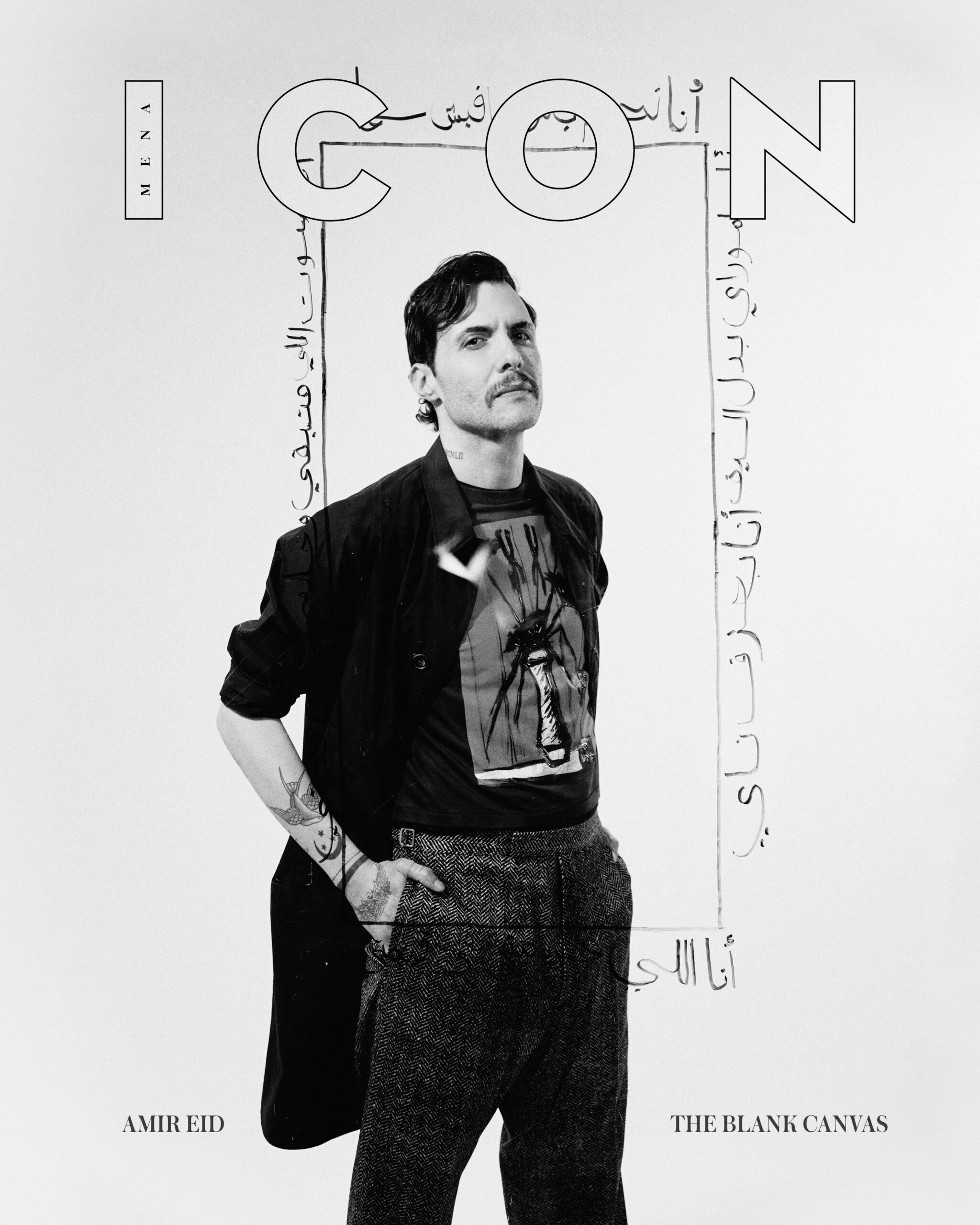
What makes an artist? Are they born or made? Is success measured by their ability to touch people, the artistic value of their work, its popularity or simply their presence? Whatever the answer, Amir Eid, the Egyptian singer, songwriter, and actor, embodies a true artist. Not in the overused sense of the word, but in its raw, authentic meaning—one that we seem to have forgotten with time.
In an era where ‘artist’ is a term thrown around lightly, to describe names that vanish as quickly as they appear, Eid is an exception who has weathered the test of time with victory. His artistry is defined by a deep-rooted philosophy: technical skills can be learned, but genuine artistic expression requires nurturing. “From day one, I wasn’t just trying to learn how to write, play, record, or sing. I wanted to think like an artist, to see the world through an artistic lens,” Eid reflects. “It wasn’t about tools or techniques. It was about developing a sensibility. I wanted art in everything, from the way I dressed to the films, poetry and literature I consumed.”
The early years of Eid’s self-discovery were about translating emotions into art and searching for an identity. Once he found it, the next phase became about refining and embodying that identity. “You find yourself when you see the path, even if you’re not ready to walk it yet,” he explains. “You recognise its shape, you know what you need to do to get there. It’s about piecing together the final parts of the puzzle.”
For Eid, art isn’t confined to its traditional domains. It extends to all roles and professions. “I believe there’s an artist within every person. Everyone appreciates art in some form, whether in cinema, music or else. Even when designing their home, people instinctively seek to add an artistic touch. Any young man who takes his time dressing up nicely before stepping out is, in essence, an artist. But daily life pulls us away from our inner artist, distracting us until we neglect it. And anything neglected begins to fade. The artistic instinct exists within us all in varying degrees, but I was determined never to abandon mine. I sought it out, not because it was lost, but because I wanted to recognise, understand and embrace it.”
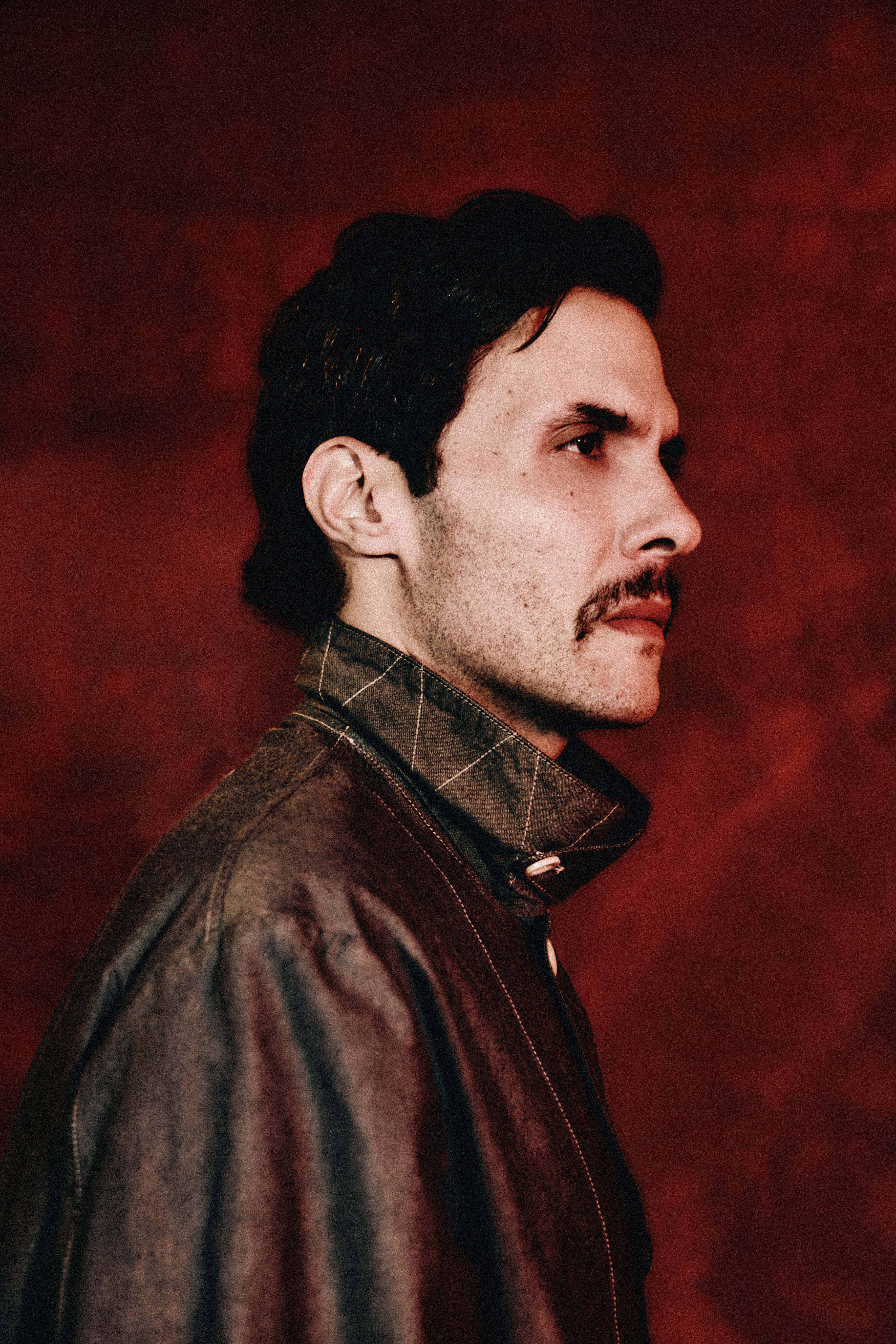
This philosophy has been forged over the last two decades. In 2003, Cairokee (initially, they called themselves Black Star), was officially formed, bringing together five members: Amir Eid (vocals and guitar), Sherif Hawary (guitar and vocals), Tamer Hashem (drums), Adam El Alfy (bass guitar) and Sherif Mostafa (keyboard).
Like many emerging bands, Cairokee started by performing cover songs in cafés and bars, such as Cairo Jazz Club and After 8, holding weekly gigs and promoting their shows by plastering posters around Maadi’s neighbourhoods.
With the eruption of the Egyptian revolution in 2011, Cairokee released “Sout El Horeya” the day before Hosni Mubarak stepped down. The conjunction of these two events turned the song into an anthem, a sonic emblem of hope and defiance. They followed with “Ya El Midan” featuring the iconic Aida El Ayoubi, then “Matloob Zaeem”, and “Ethbat Makanak”, songs that cemented their reputation for bold, politically charged music.
From “Sout El Horeya” to 2023’s “Telka Qadeya”, a song that denounces the war on Gaza and Western hypocrisy, Eid and Cairokee have never shied away from speaking truth to power. Eid recalls how “Telka Qadeya” came to be:
“I was about to sleep when I felt that if I didn’t sing this, no one else would. So, I got out of bed, shared a voice recording of the song with the band, and we started recording immediately.”
But Cairokee’s music isn’t just political. Their songs dissect love, identity, self-destruction, time and the chaos of modern life. Each track feels fresh, not because the themes are new, but because the storytelling is. There’s an unmistakable originality, a signature blend of raw honesty and lyrical depth that makes Eid’s voice instantly recognisable.
But when I ask him whether he truly believes that something entirely new can exist in art, or if ‘originality’ is even possible in a world brimming with mutual inspiration and accumulated influence, he responds without hesitation: “Of course not.” He expands on the idea, “I believe in Carl Jung’s theory of the collective unconscious, where everything around us is stored in our subconscious, and we spend our lives trying to make sense of it. You are a product of everything you’ve experienced–your upbringing, the things you’ve seen, the impressions that have been imprinted on you. A melody you once heard might have stirred something within you, and later, when you create something new, you might find yourself gravitating toward that same tune without realising where it came from. That’s why, when a song is complete, it doesn’t feel like it was made, it feels like it was found, as if it had always existed and you merely uncovered it. If we go back to the earliest times, humans would hear birdsong and be inspired to sing. From there, melodies evolved, like atoms multiplying, intertwining with one another, creating something new.”
He indulges in the thought, explaining, “Each person carries a unique imprint, and when they infuse it into their work, it gives the work an authentic character, even if it is drawn from a thousand different sources. That’s why the same musical phrase can inspire two people in entirely different ways. When you hear the phrase Ya Habibi from Umm Kulthum’s “Alf Leila w Leila”, it evokes memories for you that may be completely different from the ones it stirs in me. That’s why songs have an intimate quality, they are not one-time experiences like a film you watch, a painting you gaze at or a poem you read. Music is the only art form you can listen to millions of times without growing tired of it, because it seeps into the soul, bypassing the mind to reach deeper places we don’t fully understand. That’s why we keep returning to it. Music, at its core, is a mysterious force that resides within us. Even in cinema, a soundtrack can make a film extraordinary without you even consciously noticing it.”
Eid knows a thing or two about a great soundtrack. After all, he was the voice behind the songs of both the film Lama Bentwled (2019), where he played a musician trying to make it through, and the TV series Revo (2022), in which he starred alongside the other members of Cairokee. The show was so well received that it returned for a sequel the following year.
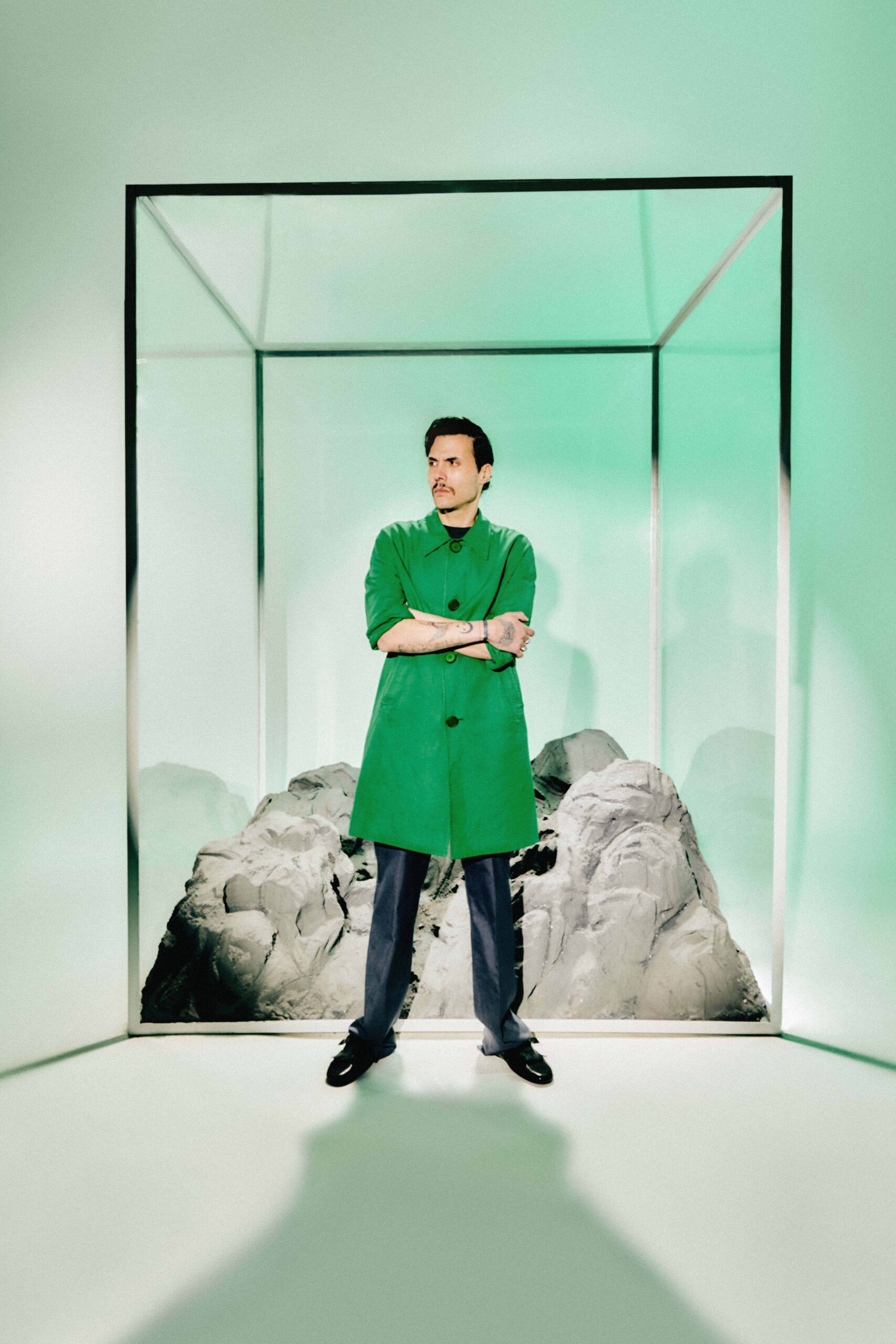
Though he has found success in acting, he has yet to fully find himself in it. “I’ve always been the kind of person who loves trying new things,” he shares. “Acting is one of those worlds where I don’t feel like I’ve fully found myself just yet, but my curiosity is still very much alive. I have a passion to discover it further. This idea of stepping into someone else’s life, living their experiences and understanding them from the inside out fascinates me. It feels like an entirely different universe, one I’m eager to explore. When I worked on the songs for Revo, I felt like the one writing and singing wasn’t me, but the character I was embodying. It was an incredible experience, and I learned so much from it.”
And indeed, his curiosity remains alive. He’s currently stepping into the role of a folk singer from the ’80s in an upcoming film titled Ahlam Sultan Al-Mansi. With excitement, he tells me, “This experience is completely different because the character is nothing like me. He’s a folk singer with a distinct vocal style and performance approach. It feels like I’ve entered an entirely new world, and honestly, I’m truly enjoying this journey!”
Eid understands the power of visuals in storytelling when the moment calls for it, even though he’s not exactly a fan of music videos. He elaborates, “I’ve never been into music videos at all. I just don’t see the point. It often feels like they’re made just for the sake of it, without necessarily adding any real artistic value to the song.”
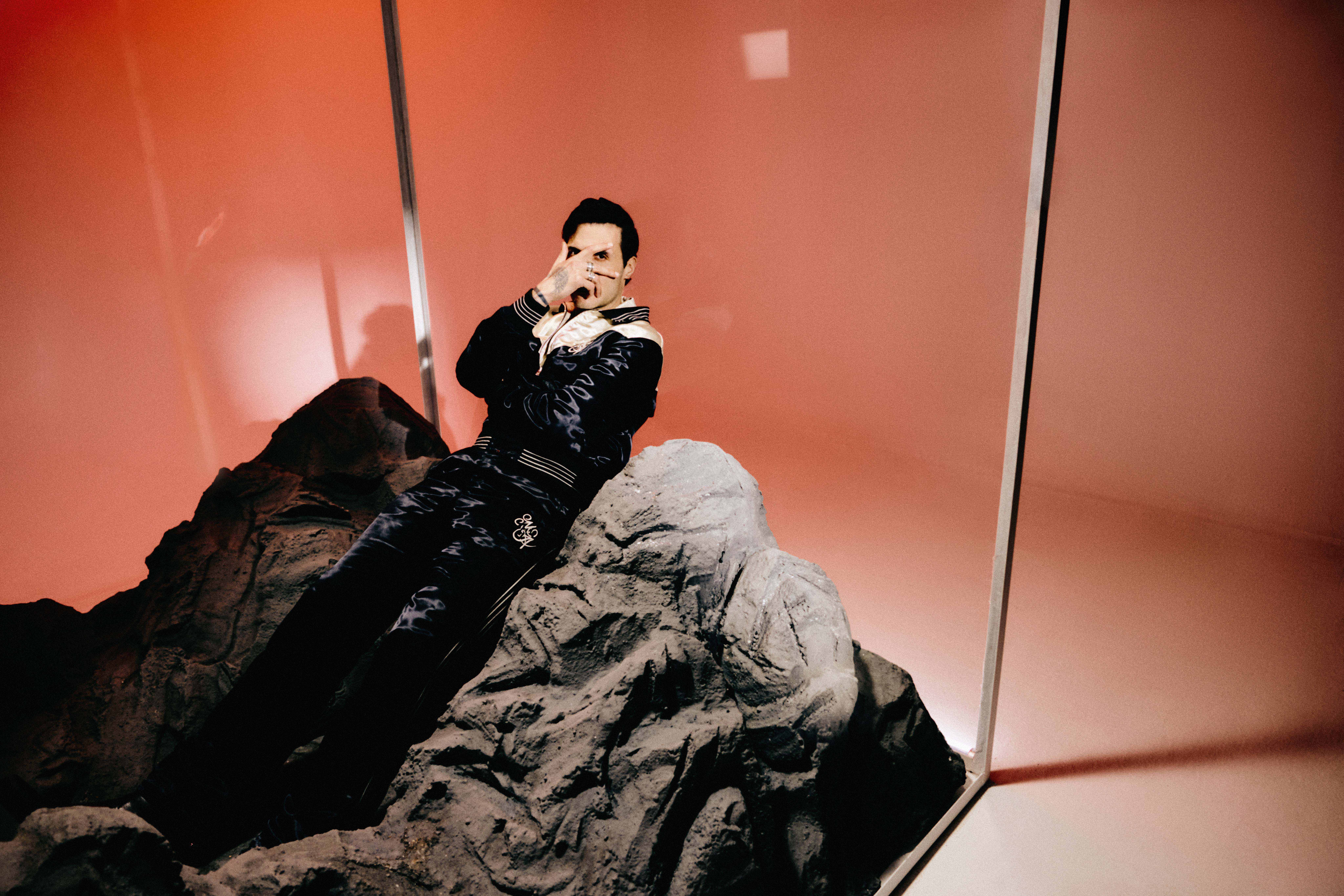
Yet with Roxi, his first solo album, he built an entire visual world around it. Designed as a short film, the project, split into three chapters, was a romantic cinematic journey shot in black and white, set in the 1950s and ’60s. “I didn’t want just another music video. I wanted a visual story that complemented the music, not just accompanied it. A traditional video can limit how people interpret a song, and I didn’t want that.”
Looking at his body of work, both in acting and music, Amir Eid feels like a man out of time, as if he’s an old soul that resides within a body that belongs to an era that doesn’t quite match it. This sensibility isn’t just reflected in his music, which evokes the moods of the ’50s through the ’80s, but in his very presence, his demeanour and style carrying echoes of a bygone era, marked by its poise and allure.
I felt this most as I sat across from him, listening to his measured, deliberate responses, each one infused with a profound passion for art. I couldn’t help but feel like I was listening to a rare archival interview with a legendary Arab singer from the mid-20th century, speaking about music as a noble calling. Even the way he effortlessly shifted between classical Arabic, Egyptian dialect and a few English words here and there, reinforced that impression.
I couldn’t help but ask if he ever felt like he didn’t belong to this era. He answers without hesitation: “Yes. I feel like the time I live in isn’t the time I truly belong to, as if my soul arrived out of sync with its destined era. I don’t easily find myself in the present, which is why I’m always drawn back to the past, whether in films, music or anything else. I’m constantly searching for something that feels like it belongs to another time, as if I’m looking for a world that resonates more with my soul. When I created Roxi, I imagined it unfolding in the ’50s or ’60s because I love crafting imaginary realms rooted in distant eras. The present doesn’t look like me.”
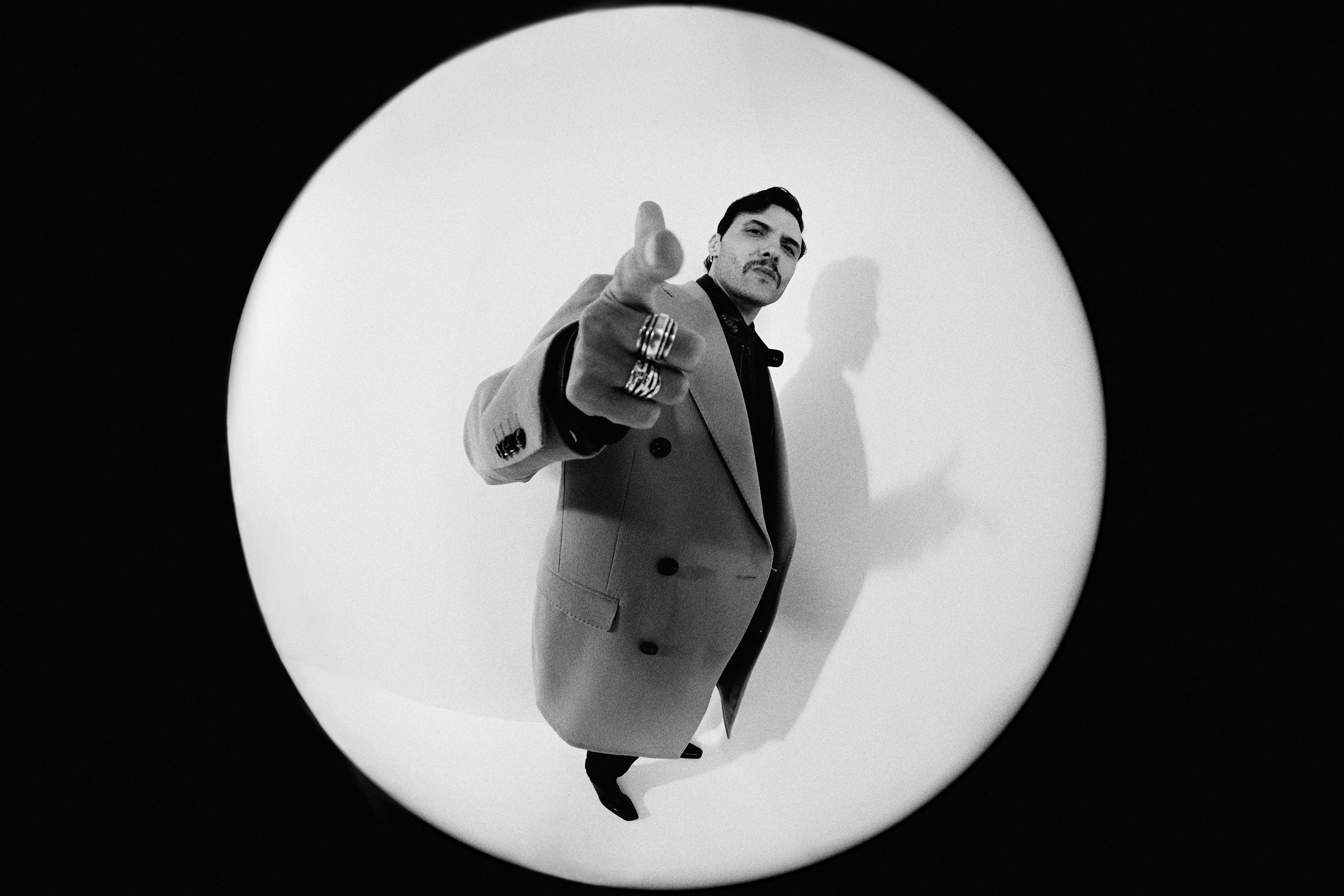
Throughout our conversation, it became clear that Eid sees the modern era, and art in particular, as having drifted toward superficiality. Numbers of releases, obsession with numbers, views and profits have become the defining metrics of success. Creativity is no longer the goal in itself; instead, value is measured by reach rather than depth.
What unsettles him most, however, is the image of today’s artist, one he believes has become entangled with a sense of inner insecurity and emotional emptiness. It’s as if some are trying to fill that void with luxury cars, expensive watches and a relentless need to present themselves as the best, the strongest. “A person who is full on the inside, who truly accepts themselves, doesn’t need to prove anything to anyone,” he says:
“They don’t seek validation through external displays. They have no need to declare, ‘I’m the best.’ On the other hand, if you came across someone like Ahmed Zaki, you’d be in awe, even if he was wearing slippers, because his value wasn’t in his appearance, but in his raw honesty and real emotion. Those who rely on hollow displays won’t hold anyone’s attention in the long run.”
Indeed, that sincerity Eid speaks of is why Cairokee endures. While other bands from the Arab indie rock boom of the 2000s have faded, Cairokee remained the undeniable force, the most influential, the most far-reaching, the most celebrated. Today, they take the world’s stages, performing before crowds of 30,000, their lyrics echoing back in one united voice, an anthem for a generation that found itself in their music.
Eid unravels the secret to timeless art, distilling it into one simple truth: “The art that lasts is an honest one. It’s not driven by shallow numbers but by fundamental questions: Why do I make music? What do I want to say? Am I doing this just for the money? Am I being true to myself? Every artist must wrestle with these internal battles, and in the end, they must win, too. True art isn’t born for sales or numbers, it comes from sincerity, simplicity and a noble desire to express.”
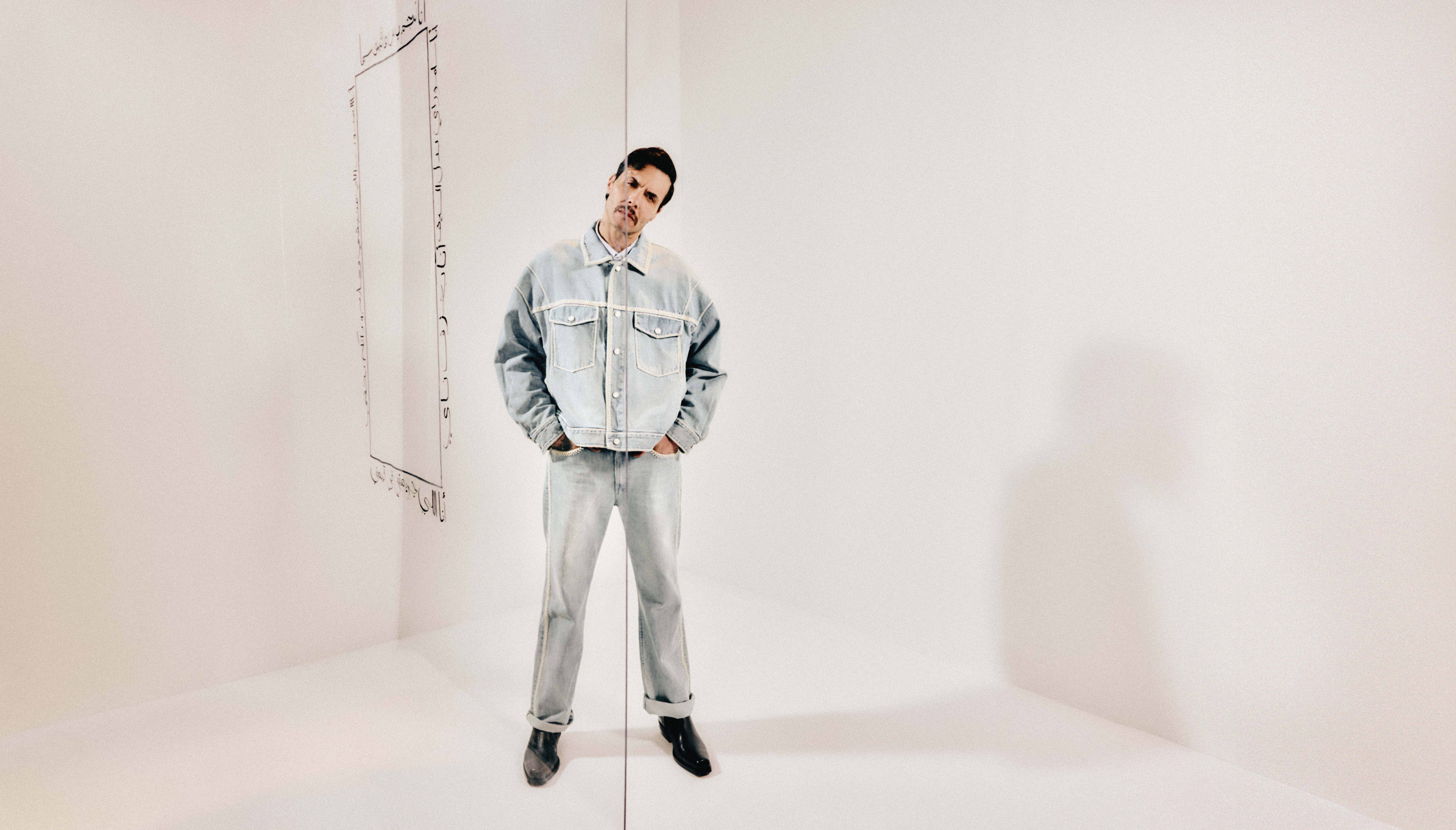
Eid concludes, “For me, songs are dopamine. They’re what keep me going. It’s the creative process itself, the mystery of songwriting, the curiosity, the urge to explore something new, that drives me. And sometimes, I feel like I’m speaking for someone out there, sitting alone, going through a moment, and finding an echo of their feelings in my words and melodies. That gives me a sense of purpose, a kind of nobility and makes me want to keep going.”
If there was ever a visual representation of his words, it was during our photoshoot. I couldn’t help but observe how music seemed to inhabit Eid, guiding his movements, and shaping his poses, as though his body were attuned to an unseen rhythm. When the speaker’s battery suddenly died, plunging the room into silence, the music within him remained undisturbed. Without missing a beat, he began humming and whistling “Zay El-Asal” by Sabah. Music runs through his veins, and that’s no exaggeration.
During our online interview, however, Eid answered each question with quiet confidence, measured and assured, never faltering or overextending. Yet, beneath that composure lay a depth of thought, his words carrying the weight of careful reflection. Every phrase felt deliberate, every sentiment gracefully articulated, as if he had already wandered through these questions long before I posed them. It was a rare kind of awareness, the mark of someone who has spent a lifetime contemplating the world with an almost restless curiosity. No matter the subject, he had met me there with wisdom and grace.
We spoke of the challenges that screenwriters face, of the differences between Leonard Cohen’s poetic songwriting and Bob Dylan’s effortless storytelling, of Carl Jung’s theories. If nothing else, it was a testament to Eid’s boundless curiosity, his insatiable passion for life and art, his relentless pursuit of discovery. He absorbs knowledge, yet with discernment, selecting only what nourishes and fuels his growth.
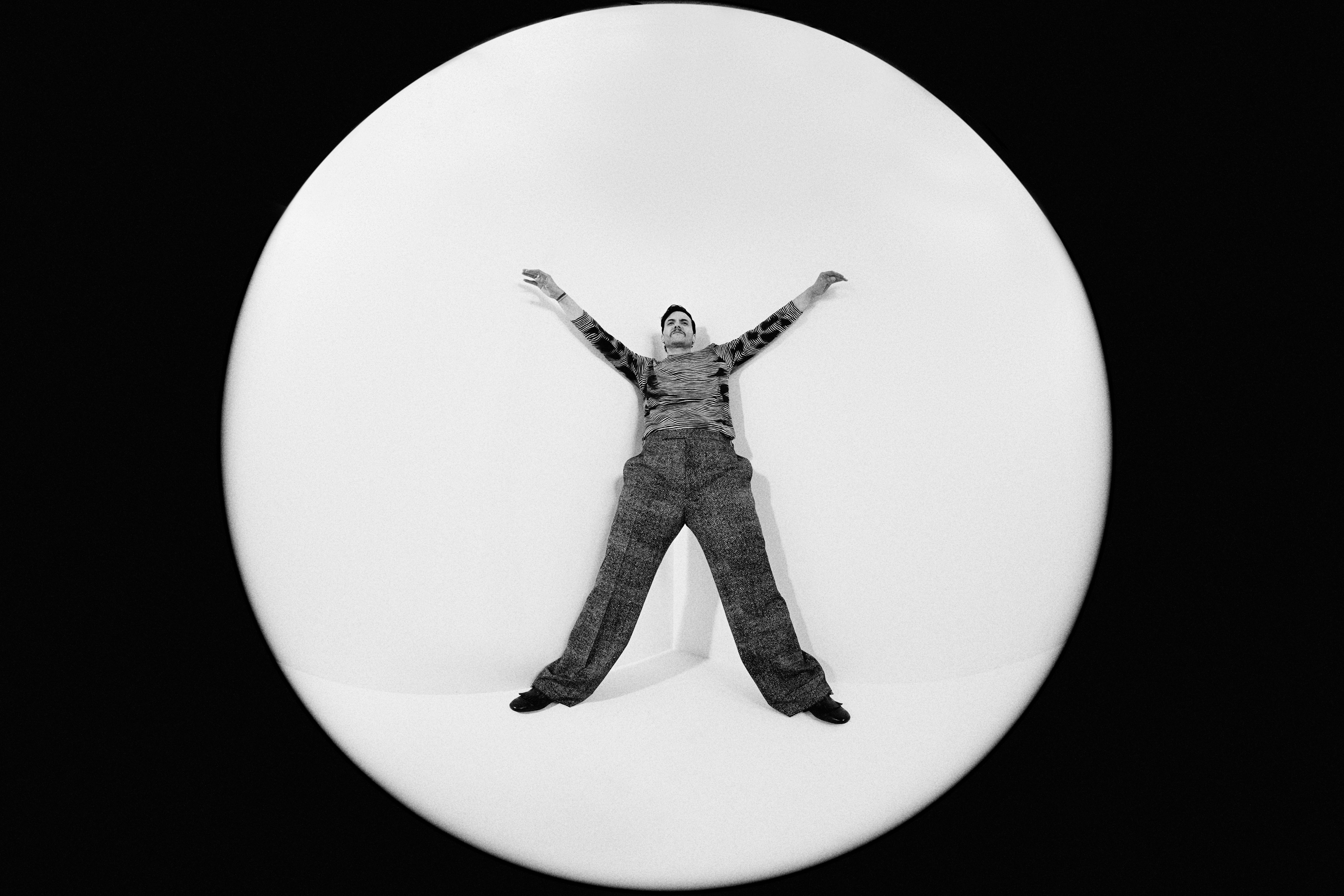
He also gives credit where credit is due, offering flowers to those who have shaped and inspired him. With no ego, he tells me that Ahmed Adawiya is his favourite artist, and that he considers himself lucky to have performed alongside him. He speaks of Ryad Al-Sunbati, of Maradona and Zinedine Zidane. He talks about Naguib Mahfouz and Taha Hussein, and their restless questioning that helped them live longer, or so he thinks. To him, one must always challenge what one knows, not to dismantle, but to understand, to sharpen our vision, and to reevaluate what we take for granted.
Eid’s spirit seems to have slipped free from the grasp of time, not bound by the present nor entirely belonging to it. He never needed to tell me this outright; the distance between him and this day and age is everpresent in his lyrics, where time ‘races ahead of the years’, as he sings in “Ana Negm” (I’m A Star).
Scientifically, when we lift our eyes to the night sky, we do not see the stars as they are now, but as they once were, years, perhaps centuries ago. Their light travels unfathomable distances before reaching us, revealing the ghostly echoes of celestial bodies that may have long since dimmed or faded away. Yet their brilliance endures, carving a path through the darkness.
So too is Eid. A star casting his light from another time, arriving precisely when it is meant to. And while he may feel that he doesn’t belong to this era, I can’t help but disagree. Perhaps he is here to remind us of what we have forgotten, to restore love, art and sincerity to an age moving too fast to hold onto meaning.
Photography: Amina Zaher
Art Direction: Haya Al-Sharif
Fashion Direction: Kim Payne
Fashion Assistant: Lojain Elgawish
Grooming: Abdallah Salah
Videography: Reem Eid / Digitnet
Camera Assistant: Mounir Nabil
Set Design: Amr Haq
Executive Producers: Omer Elgoweini, Nirvana Bebars
Producer: Bassem Eldabour
Production: Fatima Mourad
Talent: Amir Eid
Words: Sami Abd Elbaki
TOP BANNER IMAGE: Single-Breasted Cotton Coat , Print Jersey T-shirt , Printed Cotton Gabardine Pants, Shuffle Monk Strap Leather Mules, Prada.